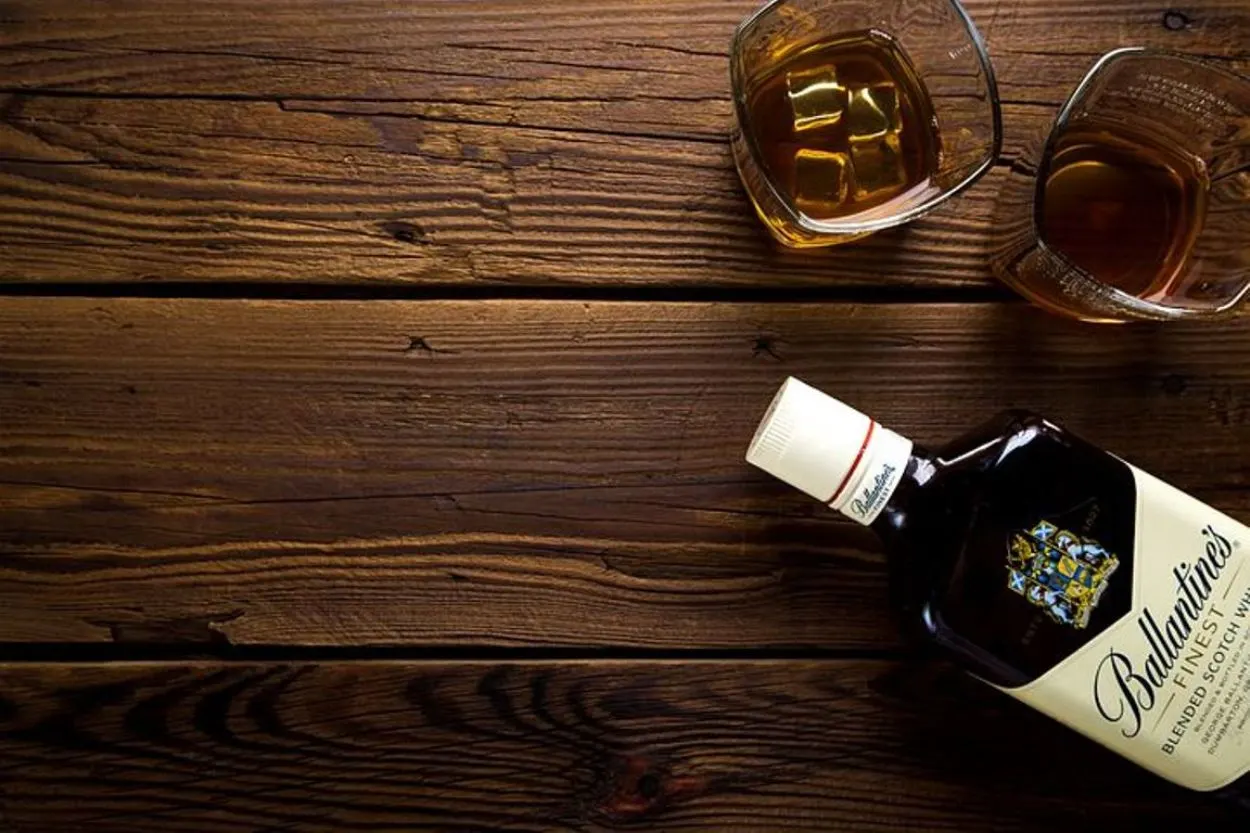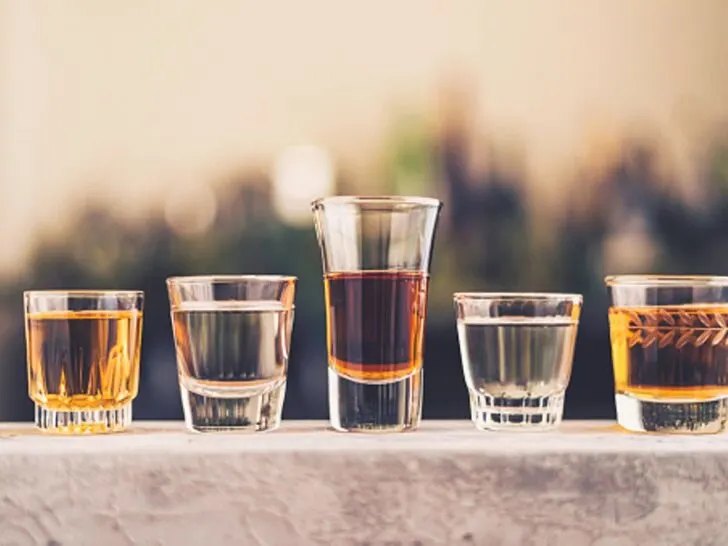Drinking alcohol is quite common for centuries. Alcohols may be distilled but can harm if more concentrated. Besides its concentration, alcoholic beverages are brewed from sugar found in fruits such as berries, grapes, apple cider, plums, and plant saps or honey.
Fermentation of fruits is a time-consuming process in which fruits are brewed in large vessels at a specific temperature in rigorous temperature control. After the completion of the fermentation process, the filtration step takes place.
Natural wines contain about 10 to 14 percent of alcohol. While other fortified beverages consist of 15 to 22 percent of alcohol.
Ethanol is a type of alcohol, which is safe to drink. Other types of alcohol are not for drinking purposes but are good for manufacturing goods, cleaning, and other uses.
The normal lack of polish is one distinction. Compared to high-grade whisky, premium tequila is quite smooth. The agave, the barrels, the yeast, and even the water all contribute to tequila’s flavor. The unaged variety of this alcohol has a lot more flavor than whiskey.
In this blog post, we’ll learn more about the differences and various types of tequila and whiskey.
Chemistry of Alcohol
Alcohols are organic compounds comprised of hydroxyl groups, attached to the carbon atom in the hydrocarbon chain. By nature, alcohol actually acts as both a chemical and psychoactive drug.
When alcohol is chained with the other atoms it produced secondary alcohols, namely methanol, ethanol, and isopropanol.

The secondary alcohols are based on different hydroxyl groups and they also vary physically and chemically.
- Ethanol: It is a type of alcohol commonly found in beverages millions of people drink daily such as beer, wine, whiskey, etc. Ethanol is fermented by sugar, yeast, and starches. Ethanol can be harmful and dangerous if used in excessive quantities.
- Methanol: Methanol is a type of alcohol that is commonly used in transportation fuel in vehicles. Methanol is also a vital ingredient used in making paint removers, windshields, and other chemical products.
- Isopropanol: Also known as isopropyl alcohol, it is a type of chemical that we use daily in our household cleaning products.
Remember that only ethanol is the type of alcohol that humans can consume in the form of beverages or drinks. Methanol and isopropanol are dangerous for human consumption and can cause liver failure or even death.
How Do We Categorize Alcoholic Beverages?
There are different kinds of alcoholic drinks found in the market varying in taste, color, texture, and strength. On the basis of the distillation process alcoholic beverages can be categorized into two classes:
1. Distilled Alcoholic Beverages
These beverages are more concentrated because they go through the other procedure after the fermentation is done. Removal of water and other impurities are distilled in these drinks.
These types of beverages are stronger than undistilled alcohol. All liquors and spirits are good examples of distilled beverages.
2. Undistilled Alcoholic Drinks
Undistilled alcoholic beverages have lighter concentrations; hence, they are safer to consume than distilled alcohol. They are fermented drinks, in which bacteria convert natural sugar into ethanol. Beer and wine is the example of undistilled alcoholic beverages.
Now, let’s learn about tequila and whiskey.
Tequila
Tequila is an alcoholic beverage that counts in distilled alcohol and is made from a plant called agave.
Tequila is a versatile and refreshing drink that is found only in some specific areas of Mexico. Tequila is famous all over the world specifically in the US and its home town Mexico.
However, according to the law of the Mexican government tequila should only come from the Jalisco state and should only be used with 35 and 55 percent of ABV (alcohol by volume). US government rule is slightly differing and according to US law, tequila must contain an average 40 percent of ABV.

Tequila Taste
Tequila is a distinctive indulgence with an alcoholic touch. The taste of tequila differs depending upon the agave plant’s color and the way of growing. Besides its taste, tequila can be made from any agave plant, particularly blue agave.
Some tequila is slightly sweet and oaky in taste. Tequila that is made in lowland areas is dull and heavy, while tequila from highland areas tends to be greener and lighter in texture.
Way of Making Tequila Drinks
Agave plant agave tequilana from the lily family is used for making tequila beverages. The plant is similar to aloe vera with spikes on the top.
Tequila drink which is made from old agave is more concentrated. It takes about 7 years to harvest after the growth.
Tequila is prepared from the sugar present in the agave fruit called pina. The pina is cooked in a big barrel until the sugar is extracted. After extracting sugar, the fermentation process takes place in which the sugar is fermented with yeast.
After the distillation and aged the concentrated alcohol named tequila ordinario is produced. Before final preparation, water is added to make the concentration lighter as per government rules.
Types of Tequila
The most favorite beverages of tequila worldwide include:
- Blanco Tequila
- Joven Tequila
- Reposado Tequila
- Añejo Tequila
- Extra-Añejo Tequila

How to Drink Tequila?
Drinking tequila can be a unique understanding that can be appreciated in various ways. Here are some public guidelines on how to drink tequila:
- Choose high-quality tequila: Look for 100% agave tequila, which is created from the blue agave plant and has a smoother flavor than varied tequila.
- Select the right glass: Use a shot glass or a narrow, tall glass called a “Caballito” to drink tequila. These glasses are organized to assist you savor the tequila’s scent and taste.
- Serve at room temperature: Tequila is nicely appreciated at space temperature or barely cooled. Do not attend to it over ice, as this can numb the flavor.
- Salt and lime: The conventional method to drink tequila is to lick a sliver of salt, take a shot of tequila, and then stink on a wedge of lime. The salt enables it to counteract the tequila’s powerful savor, and the lime furnishes a refreshing discrepancy.
- Sip it: For additional refined tequila knowledge, sip it gradually and savor the taste. Look for the nuances in the tequila’s flavor and scent.
- Pair it: Tequila can be paired with nutritious and spicy dishes, seafood, or grilled meats. You can also pair it with other drinks like a beer or sangria, which is a spicy tomato-based drink.
Whiskey
Whiskey, also spelled as whisky, is a variety of distilled alcoholic drink that is generally created from fermented cereal mash, which can contain barley, corn, rye, and wheat.
The distillation procedure pertains to heating the fermented mash to evaporate the alcohol, then condensing the vapor rear into a juice form.
There are many varieties of whiskey, which can vary in flavor, color, and production technique depending on where they are made. Several of the greatly famous varieties of whiskey comprise Scotch whisky, Irish whiskey, American bourbon whiskey, and Canadian whisky.
These various varieties of whiskey can be enjoyed neat, on the rocks, or mixed into a variety of cocktails.

Whiskey Taste
Whiskey is a distilled alcoholic liquid made from fermented kernel mash. Its flavor can vary depending on several factors such as the variety of kernels utilized, the fermentation procedure, the variety always utilized for distillation, the aging method, and the kind of barrel used for maturation.
Generally speaking, whiskey has a complicated flavor silhouette that can be characterized as smoky, woody, spicy, and sometimes fruity. The taste can also be impacted by the region where it was elicited.
For example, Scottish whiskies tend to be smokier, while Irish whiskies tend to be softer and mellower.
When tasting whiskey, the public often looks for specific characteristics such as scent, flavor, and mouthful. The aroma can vary from sweet and fruity to smoky and peaty, while the taste can range from sweet and caramel-like to spicy and peppery.
The mouthfeel can also vary depending on the type of whiskey, with some being creamy and others existing more astringent.
Ultimately, the flavor of whiskey is a consequence of personal intention, and the best way to find what you like is to try various kinds and see which ones you enjoy the most.
Way of Making Whiskey
Making whiskey naturally involves the followership steps:
- Malting: The foremost step in making whiskey is to malt the grains, usually barley. This involves soaking the grains in water to allow them to germinate and then drying them to quit the germination method. This creates enzymes in the kernels that will restore the starch into sugar during the next step.
- Mashing: The malted kernels are then ground up and mixed with hot water in a process called mashing. This allows the enzymes in the seeds to break down the starch into sugar.
- Fermentation: The sugar-rich liquid (called wort) is then refrigerated and yeast is put in to begin the fermentation method. This puts up with several days and results in the production of alcohol.
- Distillation: The fermented juice is then distilled in a copper still. This pertains to heating the liquid to vanish the alcohol, which is then compiled and thickened back into a liquid form.
- Maturation: The whiskey is then aged in oak casks for several years. This authorizes the tastes and scents to develop, and the whiskey to seize on a unique color.
- Bottling: Once the whiskey has aged to the desired taste and color, it is then bottled and tagged for the deal.
Of course, there are many deviations in this procedure depending on the variety of whiskey being elicited, the area where it is made, and the specific methods used by respective distilleries.

Types of Whiskey
Whiskey is a distilled spirit created from fermented grains, typically barley, corn, rye, or wheat. There are many different types of whiskey, which vary based on their ingredients, production methods, and countries of origin.
The most famous types include:
- Scotch Whiskey: A whiskey created in Scotland from malted barley, water, and yeast; it must be aged for at least three years in oak barrels.
- Bourbon Whiskey: A whiskey created in the United States from a grain variety that is at least 51% corn. It must be aged in recent, charred oak barrels.
- Rye Whiskey: A whiskey created from a kernel variety that is at least 51% rye. It is often elicited in the United States and Canada.
- Irish whiskey: A whiskey produced in Ireland from malted and unmalted barley. It is generally distilled three times and aged for at least three years in oak barrels.
- Canadian Whiskey: A whiskey made in Canada from a blend of kernels, comprising corn, wheat, and rye. It is frequently blended with additional spirits.
- Japanese Whiskey: A whiskey created in Japan that is often sported after Scotch Whiskey. It is generally created with malted barley and aged in oak casks.
- Tennessee Whiskey: A whiskey created in Tennessee that is identical to Bourbon Whiskey, but is charcoal screened before aging.
- Corn Whiskey: A whiskey created in the United States from a tiny 80% corn. It is frequently unaged or old for a short duration in oak barrels.
- Wheat Whiskey: A whiskey created from at least 51% grain. It is frequently elicited in the United States.
- Single Malt Whiskey: A whiskey created from 100% malted barley and elicited by a single distillery. It is frequently aged in oak casks for several years.
These are just some of the many types of whiskey functional. Each kind has its unusual flavor profile, gaining them a famous choice among spirits enthusiasts.
How to Drink Whiskey?
Drinking whiskey is an emotional knowledge and there is no one right way to do it. Nonetheless, here are some known tips on how to drink whiskey:
1. Choose a Glass
The type of glass you utilize can influence the path the whiskey tastes. A tumbler or a Glencairn glass is a famous option for whiskey.
2. Pour the Whiskey
Pour a criterion of whiskey (usually 1-2 ounces) into your glass.
3. Add a Splash of Water (optional)
Adding a splash of water can assist open up the taste of the whiskey, particularly if it’s a high-proof or cask-strength whiskey. The public rule of thumb is to put in a comparable quantity of water to the whiskey, but it’s truly up to emotional tendency.
4. Swirl the Whiskey
Stirring the whiskey in your glass can assist furlough the aromas and flavors.
5. Take a Sniff
Take a juncture to smell the whiskey before drinking it. This can provide you with a notion of the aromas and flavors you can anticipate.
6. Take a Sip
Take a tiny sip and let it sit on your tongue for a few moments before sipping; this can enable you to taste the various flavors and reminders in the whiskey.
7. Savor the Whiskey
Take your period and taste the whiskey. Reimburse awareness of the various tastes and how they alter as you drink.
Remember, there is no right or wrong path to drink whiskey. Investigate and discover what work is best for you. And still, drink responsibly.
Difference Between Tequila and Whiskey
| Features | Tequila | Whiskey |
| Origin | Mexico in an Aztec era | Scotland 1494 |
| Types | Different types all come from the agave plant. | Different types can be prepared from grains. |
| Alcohol concentration | Distilled with 40% to 50% ABV | Distilled and according to ABV should not exceed 55% |
| Process of making | Easier process than other beverages; it is extracted from an agave plant | Longer than tequila making; extracted from wheat, corn, barley, and other grains |
| Color | It is a clear drink with silver, golden hue, and aqua vitae; also comes in a brown shade. | Color varies depending upon the concentration of golden, ash, or brown. |
| Taste | Slightly sweeter with earthy alcoholic touch | Savor the smell of spices. |
| Way of drink | It may be drinking straight, but also with lime with crushed ice. | Whiskey may be drinking straight, with or without ice. |
| Impact on health | A normal quantity of tequila is good for digestion, and it controls blood sugar. | As for tequila, whiskey is also good for stress and trouble sleeping if consumed in less quantity. |
| Price | Tequila is expensive because of its production from a single agave plant. Around $15- $50. | Whiskey is cheaper than tequila. About $8-$20. |
What is the Discrepancy Between Tequila and Mezcal?
Tequila and mezcal are both distilled spirits made from agave plants, but they are created from various varieties of agave in various regions of Mexico.
Tequila is created from blue agave and must be created in specific areas of Mexico, while mezcal can be made from any type of agave and can be created in a wider range of regions.
What is the Difference Between Bourbon and Whiskey?
Bourbon is a type of whiskey that must be made in the United States and must be made from at least 51% corn. Additionally, bourbon must be aged in new, charred oak barrels and cannot contain any additives.
What is the Best Way to Drink Whiskey?
Again, there is no one “best” way to drink whiskey, as everyone’s tastes and preferences are different.
Some people prefer to drink whiskey neat, while others enjoy it with a splash of water or mixed in a cocktail. Many people also enjoy drinking whiskey on the gravel, which implies attending to over ice.
Bottom Line
- Tequila and whiskey are both distilled spirits made from fermented kernels or other plant materials, but they vary in several key ways.
- The main difference between tequila and whiskey is the raw material used to make them. Tequila is created from the blue agave plant, while whiskey is generally created from cereals like corn, barley, and rye.
- Another discrepancy is the aging process. Tequila is often aged in oak casks for a shorter period than whiskey, which can be aged for years or even decades. This aging procedure can impart various tastes and colors to the final product.
- In terms of alcohol content, both tequila and whiskey are generally around 40% alcohol by volume (ABV).
- Eventually, tequila is often associated with Mexican civilization and cooking, while whiskey has its origins in Scotland and Ireland and is a popular spirit worldwide.
- In summary, tequila and whiskey are both popular refined spirits with extraordinary characteristics that distinguish them from each other.

